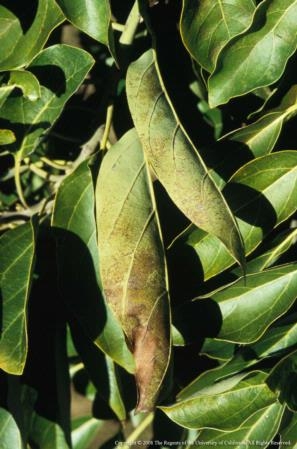A Frost Primer
Definitions:
Dry-bulb temperature: the temperature of the air as measured with a thermometer.
Wet-bulb temperature: the temperature that the tree will likely sense due to evaporative cooling of the leaves.
Dew point temperature: the air temperature required for condensation (dew or frost) to occur. This is an indication of the amount of humidity in the air. The higher the dew point, the lower the rate of cooling. As dew forms, the water releases heat (heat of condensation), and the temperature levels out.
A high dew point -- above 40 degrees
A moderate dew point -- between 25 - 40 degrees
A low dew point -- between 10 - 25 degrees.
"Cold night": any night at or below 32 degrees F.
"Key stations": weather stations with at least a ma/min thermometer and a thermograph in a white box facing north.
Temperature inversion: an atmospheric layer in which temperature increases with altitude. High temperatures during the day promote the formation of the inversion.
"Temperature ceiling": height to which heated air rises during orchard heating. The lower the ceiling, the stronger the inversion and a greater amount of heat can be obtained from wind machines and orchard heating.
Radiation freeze (frost): local cooling due to rapid heat loss from plant and soil surfaces under clear skies and light or no wind conditions. Daytime temperatures are usually in the 45-55 degree range which causes the formation of a nighttime inversion. Any significant breeze will cause temperatures to rise due to mixing of the inversion.
Advective freeze: cooling of a wide area by dry polar air. Typically the temperature is at or below 32 degrees for 2 or more days. The temperature ceiling is high or non-existent. This was what we got in December 1990.
1 gram of water = 1 calorie/degree of temperature change (°C)
1 gram of water = 79 calories released on freezing
1 gram of water = 607 calories consumed when evaporated
Gauging Wind Speed
|
Effect of air movement |
Wind force (mph) |
Terms used in forecasts |
|
Calm; smoke rises vertically |
less than 1 |
|
|
Wind direction shown by smoke drift |
1 - 3 |
light |
|
Wind felt on face, leaves rustle |
4 - 7 |
|
|
Leaves and small twigs in constant motion |
8 - 12 |
gentle |
|
Raises dust and loose paper; small branches move |
13 - 18 |
moderate |
|
Small trees in leaf begin to sway |
19 - 24 |
fresh |
|
Large branches in motion |
25 - 31 |
|
|
Whole trees in motion |
32 - 38 |
strong |
|
Breaks twigs and weak branches |
39 - 54 |
gale |
